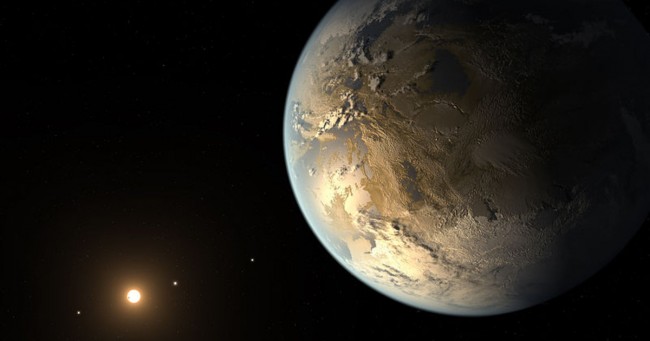
A new explanation has been presented as to why we have found no evidence of life elsewhere in the universe. According to a paper published in Astrobiology, life may appear often, but is usually wiped out through lack of temperature control capacity.
The Fermi Paradox asks the question why, given the abundance of places life could evolve in the universe, we have seen no signs of aliens. When Fermi raised the question in 1950 there were many possible answers, including that while stars were plentiful, planets might be rare.
Now however, we know that the galaxy is teeming with suitably located worlds. “The standard at the moment is to try to find a wet rocky planet in a habitable zone, but the whole thing is based on physics and chemistry, nothing to do with biology,” Dr. Charley Lineweaver of the Australian National University, a coauthor on the paper, told IFLScience.
In this context three explanations are popular. The first says that while the necessary ingredients for life are common, the “recipe” is often lacking; these ingredients seldom come together in the right way. A second, even more depressing, theory holds that life is common but technological civilizations usually destroy themselves before they can make contact. Lineweaver himself has promoted a third explanation, in which life is common, but almost never evolves the sort of intelligence necessary for a high-tech civilization.
Lineweaver and PhD student Aditya Chopra have now proposed a new answer. Life emerges frequently on planets where liquid water exists, they suggest. However, for most such planets the water that makes life possible is a brief visitor, quickly lost to either a run-away greenhouse effect or a permanent icehouse. For examples they point to our nearest neighbors, noting that Venus and Mars may both have once had surface water, and with it life, but conditions have changed.

The difference on Earth, the authors suggest, may have less to do with our ideal location in the middle of the habitable zone, and more to negative feedback loops that keep temperatures comfortable. The major known mechanism for this is the silicate weathering cycle that pulls carbon dioxide out of the atmosphere, and speeds up when temperatures get too warm.
However, Lineweaver told IFLScience, we don’t know how early in Earth’s history this loop appeared. An alternative explanation is that it is life itself that stabilized Earth’s climate, as proposed in the controversial Gaia hypothesis. Under this scenario, Earth is habitable because it is inhabited, with early lifeforms keeping the planet in conditions that facilitated later evolution.
Lineweaver and Chopra propose that this is rare – most planets freeze or boil before life develops the tools to modify them suitably.
If their theory is right, the best places to look for life may be orbiting fairly young stars, and water may only survive on older planets where it has life to protect it. The good news would be that for us, the most dangerous time for life’s survival may be behind us.

Facebook Comments